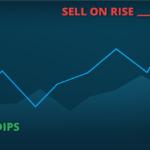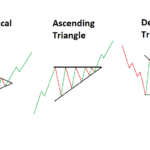As the activity in commodity exchanges relates to products, such as oil and not merely oil prices, there are obviously seasonal influences on commodityA tangible good that can be and which has been “commoditized”, i.e. standardized by quality and ... pricing.
While these are anticipated by marketA location or entity where people and entities can negotiate and trade assets of value. makers well in advance, as is evident through the examination of trade futures, there is little to be gained from trying to set up positions well in advance.
Developments in weather, such as a heatwave or record cold wave, can drastically alter the prices for commodities, resulting in huge profits for savvy traders.
A season to laugh– a season to cry
As an example of seasonal influences on commodity pricing, record drought in the Midwest farm belt of the United States in 2013 pushed prices for corn and other grains to record levels.
As there was also substantial demand for corn for ethanol fuel, there was also tremendous pricing pressure on corn and other crops in the United States. Coupled with demand from China for feed corn, prices soared.
Another example of seasonal influences on commodity pricing occurred that same winter. During that period, parts of China and India experienced the coldest weather in over four decades. As a result, the demand for coal and heating oil increased.
As China and India comprise the bulk of the world’s populace, the needs from just those two countries upended the market.
Monetising the weather
Seasonal influences on commodity prices can be utilised for a wide range of investing and speculating tactics and strategies, both short term and long term.
For the short term, traders can try to profit from the swings in prices. Those looking to buy and hold for the long term can use price changes to establish a positionAn open trade or transaction. A position can be long (a contract to buy the asset) or short (a contr... at a variety of price levels.
Commodity costs are influenced by basic supply and demand from the market as a result of seasonal influences. That certainly can reward investors with higher prices in short term trading.
Traders can move in and out as the weather alters the price of a commodity. The gains can be amplified as price movement is further motivated by speculators piling into the commodity, seeking to capitalise on the impact of seasonal factors – short term influences that do not necessarily alter the long term fundamental economic basis of the assetA stock, commodity, currency, index or any other entity one may trade or invest in..
Here the buying and selling are done strictly in line with market conditions, not commodity factors relating to supply and demand.
The Long View
No matter what the seasonal influences on commodity prices, the greatest profits in the commodities markets are made from investing in the long term movements of the market that are due to fundamental changes in the supply and demand of a product.
Here, the impact of seasonal forces can be utilized to buy on the dips.
Due to the weather, demand could fall. Mild seasons will mute the demand for heating oil to warm homes or natural gas to power utilities to run air conditioning.
With prices for the commodities falling, investors can use the opportunity to buy for the long term at a lower price.
That allows for even larger profits over the long term when economic demand moves the market back into equilibrium for that commodity, as always happens.











